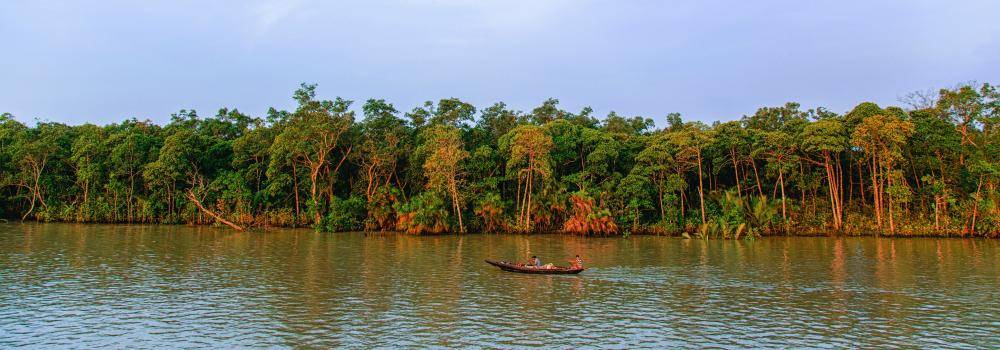
Overview
Home to the biodiverse Sundarbans mangrove ecosystem, which is greatly threatened by climate change and land development, Bangladesh has made strides in environmental policy and climate change adaptation efforts to protect its valuable natural resources. Although environmental education has not been widely incorporated into these policies, there have been efforts to integrate education for sustainable development (ESD) into national curricula and textbooks, in addition to the work done by NGOs to bring fun and innovative environmental education programming to students around the country.
Policy & Practice
National Legislation
There has not been a direct government policy concerning environmental education in Bangladesh. However, a number of national environmental policies and commitments incorporate education and awareness in their goals. Bangladesh’s Environmental Policy of 1992 includes “Education and Awareness” as one of 15 broad sectors covered by the policy, and includes the following statements related to environmental education:
- To eliminate and to initiate extensive awareness concerning protection and sustainable utilization of the environment and natural resources.
- To ascertain inclusion and to disseminate environmental knowledge and information in the media and formal and information systems of education.
- To motivate active and spontaneous participation of people in all activities concerning environmental management.
- To incorporate environmental issues into the training programs designed for public and private sector officials and industrial and commercial workers.
- To encourage research activities and to invent technology to ensure long term sustainable utilization of the natural resources.
- To ensure that the environmental issues are given due consideration by the research and development institutions. (see National Conservation Strategy: Education and Awareness for more information)
The National Environmental Management Action Plan (NEMAP) of 1995 includes a full section on “Education and Awareness,” with the aim of “improving environmental awareness amongst the population and developing the study of environment at all levels of education” (pg. 110). The document provides a set of recommended actions for the Ministry of Education, universities and other educational institutions, and NGOs, to revise curricula for students to better integrate environmental education and better incorporate environmental issues into teacher training programs.
The National Adaptation Programme of Action (2005) also suggested the “inclusion of climate change issues in curriculum at secondary and tertiary educational institutions” and under the list of priority activities proposed a 0.5 million USD project for the development and implementation of climate change course curricula in collaboration with the Board of Education and universities.
EE in K-12 Education
In 2013, the National Curriculum and Textbook Board of Bangladesh launched a new curriculum and textbooks to place emphasis on Education for Sustainable Development (ESD), particularly in the “Bangladesh and Global Studies” course curriculum (read more here). In the textbook preface, the NCTB Chairman notes “Topics and themes have been selected in a way that would not only help students address the needs of real life situations, but would also inculcate humanistic values in them as well as broaden their mental horizon.” Prior to this, teaching about the environment was largely limited to the physical sciences, such as teaching about the physical aspects of water, air, and soil. (see National Conservation Strategy: Education and Awareness for more information)
Leadership
National EE campaigns and funding
In Bangladesh, environmental education programs are largely funded by nongovernmental organizations (NGOs).
Bangladesh Environment and Development Society (BEDS) aims to “build the capacity of the most vulnerable communities in the region to ensure sustainable use of natural resources.” Their environmental education efforts include the Sundarbans Mangrove Education Project and a number of educational board games and books for students of various grade levels that provide a fun way to learn about the country’s biodiversity and environmental threats.
Bangladesh Poribesh Unnayan Sangstha (Bangladesh POUSH) ran a nature awareness program in 50 non‐formal primary schools (which served as feeder schools into government-run schools) in which they led teacher training and guides for nature walks, organized field trips to zoos and botanical gardens, and developed a curriculum and educational materials with the input of teachers so it could be adopted by the government-run schools. Read more about the program here.
Prokriti O Jibon (Nature and Life) Foundation, an NGO focused on conservation and natural resource management in Bangladesh, collaborated with Build Bangladesh on an “intergenerational intervention program” to build environmental literacy by integrating environmental education into the mainstream public school curricula.